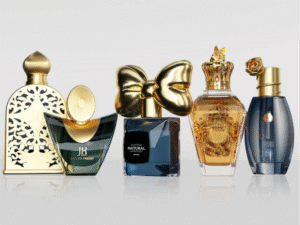As we step into 2024, the spirits industry continues to evolve, driven by changing consumer preferences, technological advancements, and a growing focus on sustainability. One area that has seen significant transformation is spirit bottle design, which plays a crucial role in shaping a brand’s identity and appealing to modern consumers. In this article, we’ll explore the Top 5 Trends in Spirit Bottle Design for 2024, offering insights into how these trends can help brands stay competitive and innovative.

Table of Contents
1. Sustainability and Eco-Friendly Materials in Spirit Bottle Design
The Impact of UV Light on Spirits
UV light is a form of radiation that, while invisible to the naked eye, can have serious consequences for the quality of spirits. When light, especially sunlight, interacts with certain spirits—like whiskey, vodka, or rum—it initiates a process called photo-oxidation. This chemical reaction breaks down organic compounds, causing undesirable changes in taste, aroma, and color.
Notable Effects of UV Exposure on Spirits:
- Flavor Degradation: UV light alters the molecular structure of spirits, leading to off-flavors. Delicate notes of vanilla, caramel, or fruit can become muted, and harsh, bitter tastes may emerge.
- Color Change: Some spirits, particularly aged ones, derive their color from wood barrels. UV exposure can cause these hues to fade or even change, making the product look unappealing.
- Oxidation: UV rays accelerate the oxidation process in spirits, which depletes their freshness and overall quality.
Common Signs of Light Damage in Spirits
For a consumer or connoisseur, identifying light-damaged spirits isn’t difficult. Discoloration is a telltale sign. A whiskey with an uncharacteristically pale hue or a rum that appears cloudy may have been exposed to excessive light. Flavor discrepancies are another red flag—spirits that taste flat, bitter, or oddly metallic often signal that UV radiation has compromised their integrity.
Producers must understand that even low levels of light exposure over time can lead to spoilage. This makes UV protection and light-blocking technology not just an option but a necessity for premium spirits.

2.The Role of UV Protection and Light-Blocking Technology in Bottles
Overview of Light-Blocking Materials
To counter the damaging effects of UV light, modern spirit bottles are often designed with light-blocking materials. These include various types of glass, coatings, and even advanced nanotechnology. These materials aim to either absorb or reflect UV radiation, protecting the spirit inside from harmful exposure.
Common UV-Blocking Materials:
- Amber Glass: Blocks up to 90% of UV rays.
- Green and Blue Glass: Provides moderate UV protection, popular in wine and some spirits.
- Clear Glass with UV Coatings: Clear glass bottles are aesthetically preferred but often require special coatings that block UV without compromising visual appeal.
Tinted and Colored Glass: A Traditional Solution
Tinted glass has been a simple yet effective way to block light for centuries. Amber, green, and blue bottles are commonly used because they filter UV rays to different extents. Amber glass is particularly effective, shielding spirits from approximately 90% of harmful UV light. However, colored glass is not always the best solution for branding and marketing, as many spirit producers prefer clear glass bottles for aesthetic reasons.
Advanced UV-Resistant Coatings
For producers who prefer clear bottles, UV-resistant coatings offer a modern alternative. These coatings are applied as a transparent layer over the bottle’s surface, designed to block harmful UV rays while maintaining the natural appearance of the bottle. High-performance coatings can block over 99% of UV rays, ensuring optimal protection.
A key advantage of these coatings is their durability. UV coatings are scratch-resistant and maintain their protective qualities over the entire lifecycle of the bottle. This technology allows spirit brands to prioritize both aesthetics and protection.
Nanotechnology in Spirit Bottle Design
The introduction of nanotechnology in packaging has further advanced the science of light protection. Nanotechnology allows manufacturers to create ultra-thin, nearly invisible layers that effectively shield spirits from UV rays. These nano-coatings are highly effective and add no noticeable weight or thickness to the bottle. As a result, producers can offer sleek, clear glass bottles that meet both consumer preferences and protective needs.

3.Benefits of UV Protection and Light-Blocking Technology for Spirits
Preserving Taste and Quality
The primary benefit of UV protection and light-blocking technology is the preservation of flavor and quality. Spirits exposed to light can develop unpleasant tastes, but with proper protection, their original flavors and aromas remain intact. For example, whiskey with its complex flavor profile—ranging from smoky to sweet—will retain these nuances if stored in UV-blocking bottles.
Brands like Glenfiddich and Grey Goose have adopted advanced light-blocking technologies to ensure their products taste as intended, even after long periods on the shelf.
Extended Shelf Life
UV-blocking bottles also extend the shelf life of spirits by preventing oxidation. The longer spirits maintain their quality, the more valuable they become. This is especially true for premium spirits, where consumers are willing to pay a higher price for assurance that the product remains in peak condition.
Brand Perception and Marketability
Incorporating light-blocking technology into packaging can enhance brand perception. Consumers increasingly associate premium packaging with premium quality. By showcasing their investment in UV-protective bottles, spirit brands not only safeguard their product but also appeal to a growing market of discerning customers who value attention to detail.
4.How UV Protection and Light-Blocking Technology is Implemented in Spirit Bottles
Production Processes for UV-Blocking Bottles
The process of manufacturing UV-blocking bottles can be intricate. It involves several stages:
- Material Selection: Glass composition is key, with options like amber or UV-coated glass.
- Application of UV Coatings: Clear glass bottles often undergo a coating process where UV-resistant films are applied.
- Nanotechnology Integration: For premium brands, nanotechnology-based coatings are used to create seamless, invisible barriers that block UV rays.
Challenges in Implementing Light-Blocking Technology
While light-blocking technology offers numerous benefits, it also comes with challenges. Cost is a significant factor. High-quality UV-resistant coatings can be expensive to produce, especially for large-scale manufacturers. Another challenge is maintaining aesthetic appeal. Many brands prefer clear bottles, which limits the use of traditional colored glass. Nanotechnology offers a solution here, but it comes with additional production complexity and costs.
Examples of Spirits That Use Light-Blocking Bottles
Several high-end spirits use UV-protective bottles to safeguard their quality. For example, Don Julio Tequila uses specially treated bottles to ensure their product remains pristine, while Grey Goose employs advanced coatings to protect their vodka.
5.General Considerations for Light-Blocking Packaging in the Spirits Industry
Regulations and Standards for UV-Protective Packaging
When implementing UV protection and light-blocking technology, manufacturers must also ensure compliance with regulations. In many countries, packaging materials must meet specific safety standards to prevent contamination and ensure consumer health. Understanding these regulations is critical for spirit brands.
The Future of Light-Blocking Technology in Spirits Packaging
The future of UV protection in spirit packaging is bright, with continuous innovations on the horizon. Smart bottles with light sensors, more affordable UV-blocking coatings, and eco-friendly solutions are emerging. As consumers become more environmentally conscious, integrating sustainable materials with advanced UV protection is likely to become a key trend.
Conclusion
In the world of spirits, UV protection and light-blocking technology are essential for preserving quality. From traditional amber glass to modern nanotechnology, these innovations play a critical role in ensuring that consumers enjoy spirits as they were meant to be. For brands, investing in advanced packaging technology not only protects the product but enhances marketability and long-term brand value.



